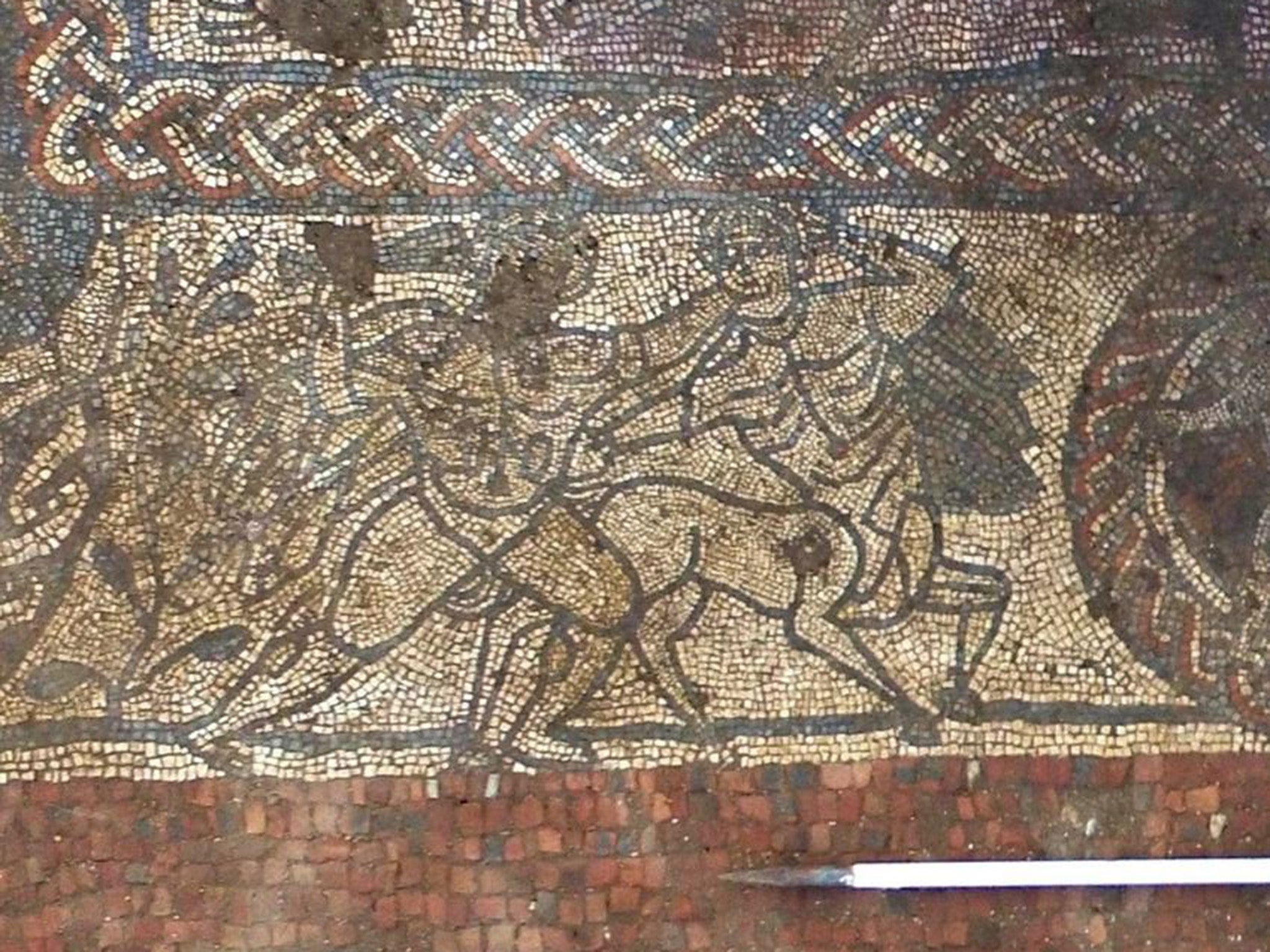Amateur archaeologists unearth rare Roman mosaic hailed as 'best seen in decades'
Other finds at the site in Boxford include a large villa, bath house and a farm building

A well-preserved Roman mosaic, described as the “most exciting” discovery in decades, has been uncovered in Berkshire by a local community archaeology dig.
The mosaic, dated from around 4th century AD, features Bellerophon, a Greek hero, riding the winged horse Pegasus. The panel shows a scene where they attack the fire-breathing monster Chimera. As a reward for killing the beast which had a lion’s head, a goat’s body, and a serpent’s tail, Pegasus was offered the King Iobates’ daughter, Philonoe.
Joy Appleton from the Boxford History Project told The Independent: “I was stunned. It’s an amazing mosaic with so many figures. There is every Greek mythical figure found on a British site. The owner of the Roman villa in which the mosaic was found, [clearly] wanted to display his knowledge as there are so many characters and beasts from Greek mythology.”
Among the most spectacular scenes is Hercules killing a centaur, possibly Nessus, whose poisoned blood later caused the death of Hercules. Other illustrative elements on the mosaic contain scenes previously unknown on other UK sites, said archaeological experts. The find, which was discovered two weeks ago, has now been covered up to protect it until further digs. The dig volunteers, some without previous experience of working on archaeological sites, are hoping to fundraise for another excavation next year.
Anthony Beeson, a member of the Association for the Study and Preservation of Roman Mosaics, described the find as “without question the most exciting mosaic discovery made in Britain in the last 50 years and must take a premier place amongst those Romano-British works of art that have come down to modern Britons.”
Luigi Thompson, who visited the site and is known for his paintings of mosaics said, “If I had the choice of only doing one painting in my career, it would be this one. It is the most delightful, lively and charming pavement I have ever seen. It causes me to imagine, with pleasure, the villa owner entertaining his guests with his knowledge of classical mythology.”
Cotswold Archaeology has been working at the site near Boxford in Berkshire since 2011. Backed by money from the Heritage Lottery Fund, previous finds include the foundations of a villa and bath house as well as a farm building. A further excavation will reveal the whole area of the mosaic and also explore more fully the Roman bath suite found in the same villa.
Join our commenting forum
Join thought-provoking conversations, follow other Independent readers and see their replies
Comments
Bookmark popover
Removed from bookmarks